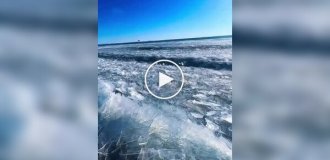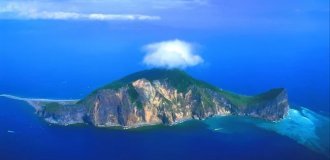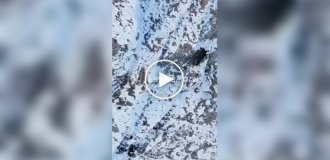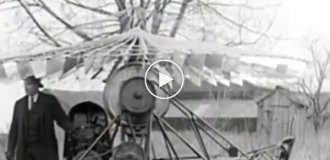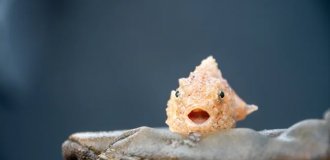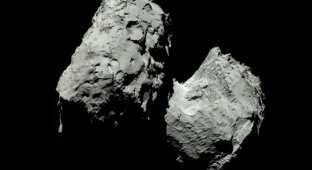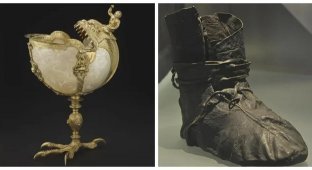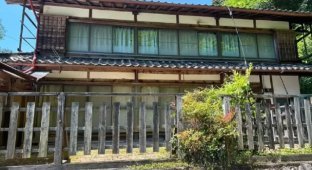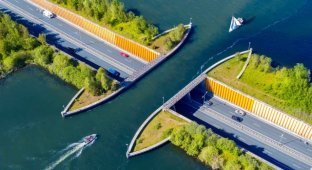Rare and interesting photos from the fronts of World War II (21 photos)
These are shots that capture not only the fighters of different coalitions and warring parties, but also those who were touched by the heavy hand of war - ordinary people, different countries, different destinies. 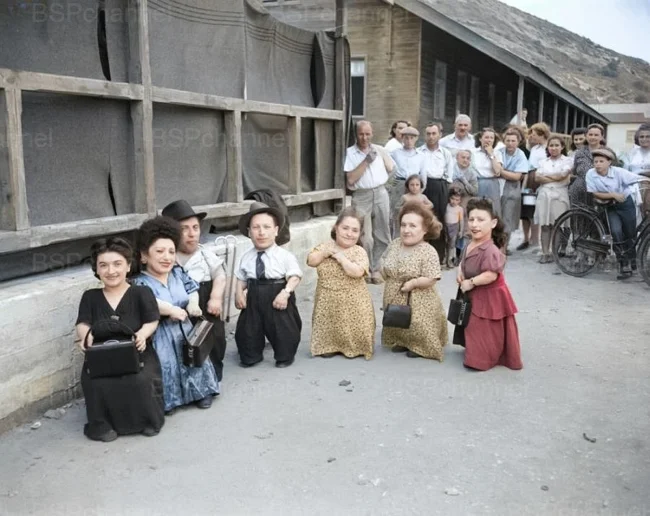
A Churchill tank of the 79th Armoured Division uses the Churchill Ark to overcome a seawall during trials near Saxmundham, 11 March 1944. 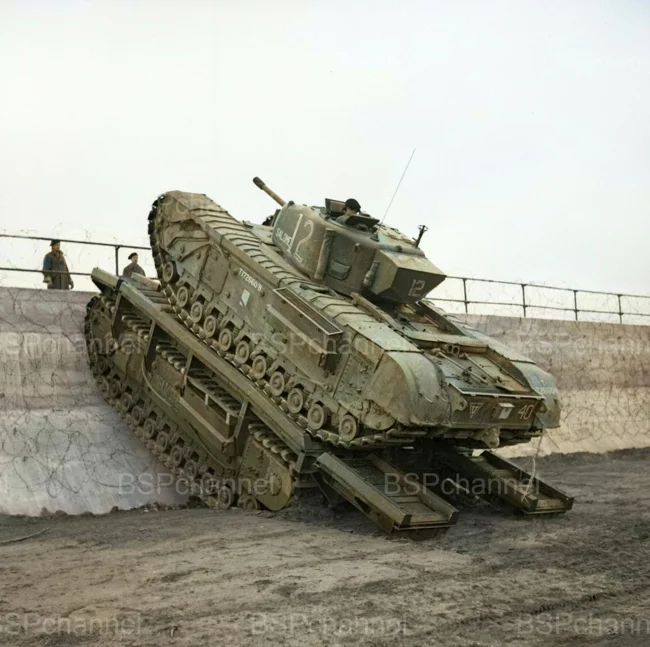
The failed Allied operation at Dieppe in 1942 forced the British command to reconsider tactics. One of the key conclusions was the urgent need for specialized engineering vehicles - bridge-laying tanks. These vehicles were supposed to ensure the passage of armored vehicles through ditches, trenches and other obstacles, without which a successful offensive became impossible. Soon military engineers and industrialists presented a whole line of new armored vehicles designed to solve complex problems on the battlefield.
View of the city of Caen, destroyed during the Allied liberation campaign in World War II, France, 1944. 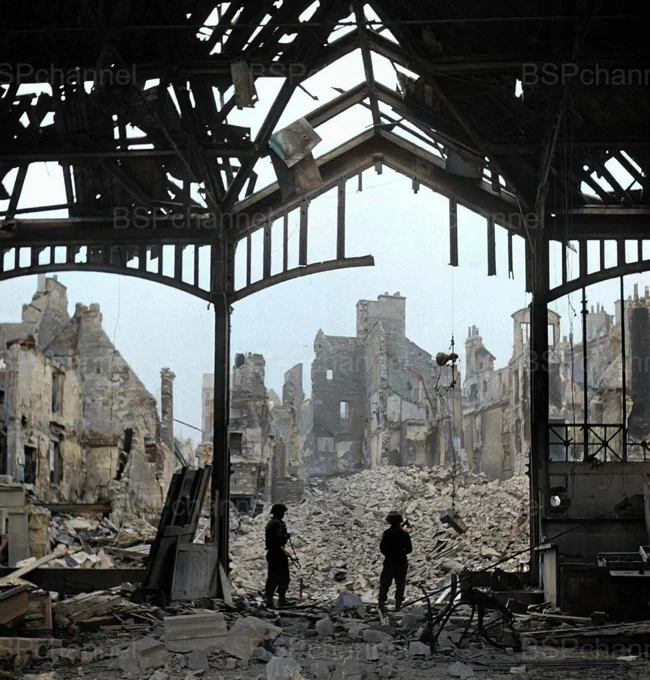
Photographer: George Roger
A Kachin soldier with a sword during the Burma Campaign in World War II, 1944. 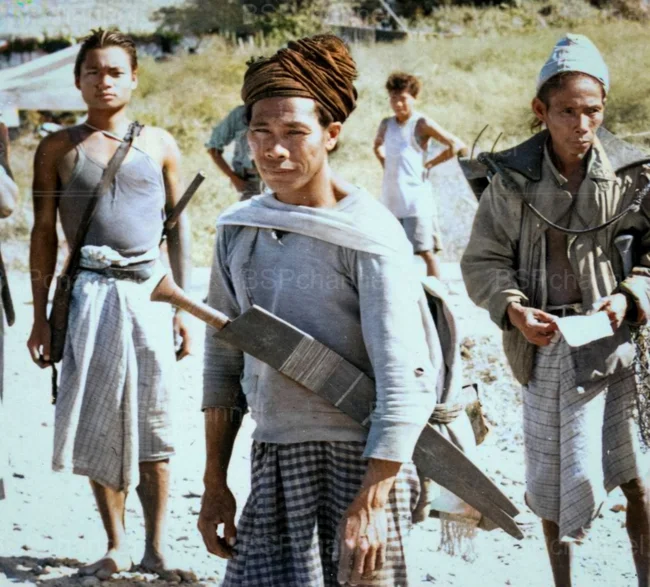
In 1944, in the vast expanses of modern Myanmar, as well as in the border regions of India and China, a large-scale confrontation unfolded, which went down in history as the Burma Operation. From January to November, the Allied forces fought against the Japanese army.
Kamikaze pilots' aircraft-missile Yokosuka "Oka" type 11. Japan, 1945. 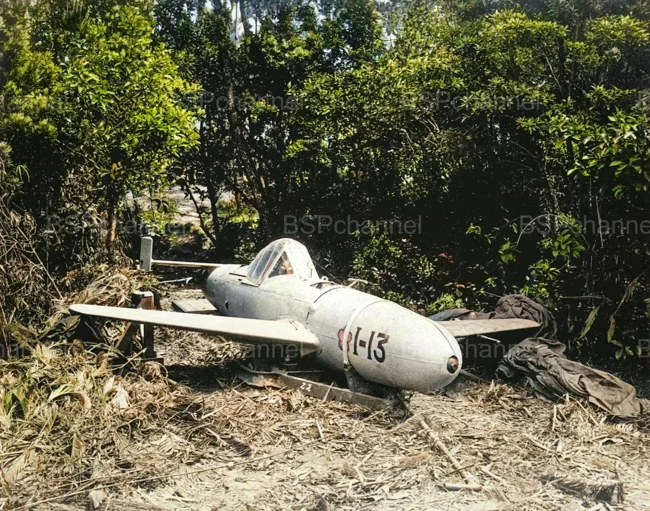
This unique manned rocket attack aircraft was specifically designed to perform deadly kamikaze attacks against Allied fleets in the final stages of World War II. Although the Ohka had impressive speed, its extremely limited range (only 37 km) forced the Japanese to use carrier bombers, which became easy prey for American carrier-based fighters. During the fierce battle for Okinawa in 1945, the Ohka was able to damage several auxiliary and transport ships, but was never able to sink a single large warship. Japanese engineers tried to correct the design flaws by creating modernized versions, but these improvements were too late - the war was already drawing to an end. Interestingly, the Allies gave the Ohka the derogatory nickname "baka-bomba" (from the Japanese word for "fool"), which reflected their attitude to this desperate attempt by the Japanese command to turn the tide of the war at the cost of the lives of suicide pilots. The example in photo No. I-I3 is now in the Cosford Aerospace Museum (UK).
Life magazine front-line photojournalist Margaret Bourke-White, 1940s. 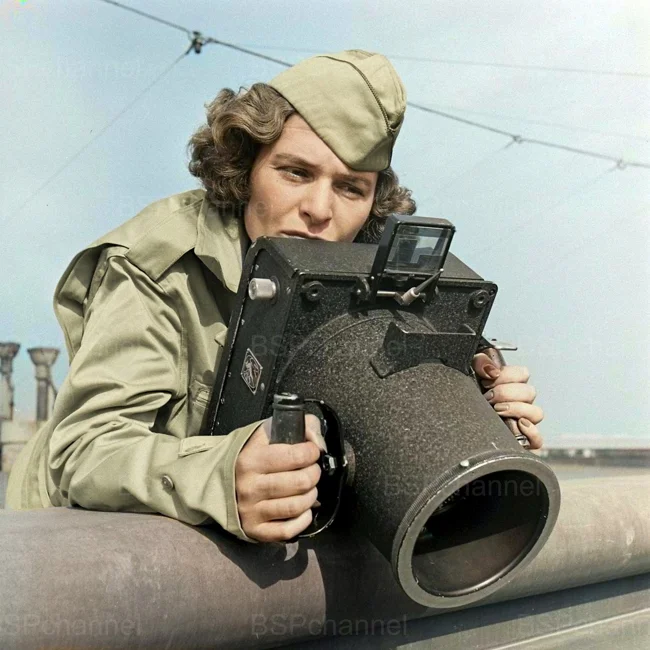
Margaret Bourke-White made history as the first female war correspondent to receive permission to work directly in a combat zone. Her assignment to the USSR in May-September 1941 coincided with dramatic events: Germany's violation of the Non-Aggression Pact. At the time of the Nazi invasion, she remained the only foreign photographer in Moscow, documenting the first days of the Great Patriotic War. Later, the courageous photojournalist accompanied American troops: first in North Africa, then in Italy and Germany. In the spring of 1945, she joined General George Patton during his inspection tour of liberated Germany. Bourke-White was particularly impressed by her visit to the Buchenwald concentration camp. She later admitted: "The camera became a kind of protection for me. This small barrier helped me maintain a professional distance in the face of unimaginable horror." Her photographs became not only historical documents, but also emotional testimony to the tragedy of war.
A Royal Air Force rescue airboat in the Middle East, 1942. 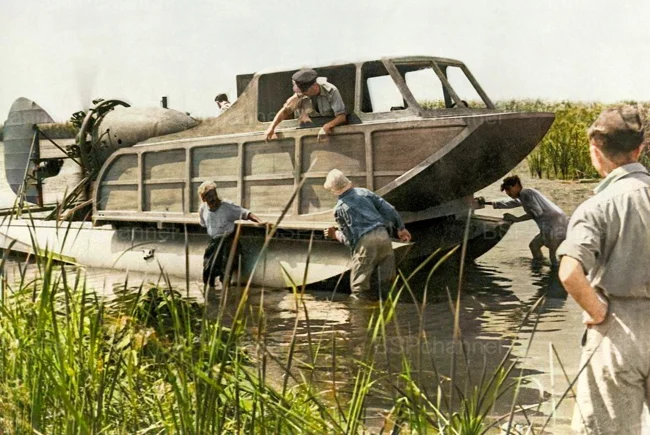
During the war, she served on the waters of the Nile Delta, performing the most important task of rescuing pilots. Her crew was ready at any moment to come to the aid of pilots whose planes crashed or were forced to make an emergency landing on the water.
Hamburg after four Allied bombing raids in July 1943. 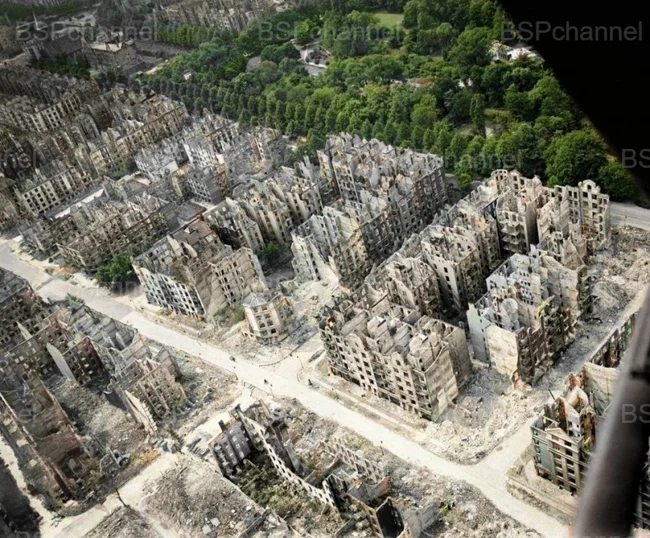
In the summer of 1943, Hamburg experienced one of the most devastating air campaigns of World War II. From July 25 to August 3, the British Royal Air Force and American aircraft carried out a series of carpet bombings on an unprecedented scale.
Demonstration of the Maus tank model to Hitler, Wolf's Lair headquarters, May 14, 1943. 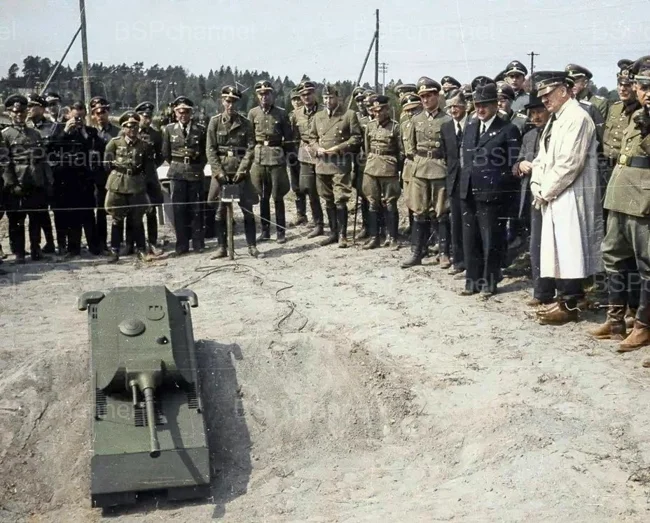
This combat vehicle never managed to take part in the battles. When the Soviet troops were already advancing across Germany, German designers completed the assembly of two prototypes and conducted tests at the proving ground. Realizing the inevitability of defeat, the crew received orders to destroy the tanks so that they would not become trophies of the Red Army. However, Soviet specialists managed to literally put them back together - from fragments of two damaged vehicles, they restored one copy. Today, this unique tank occupies a place of honor in the collection of the legendary armored vehicle museum in Kubinka, becoming material evidence of the last days of the Nazi war machine.
American planes fly near the sailboat "Joseph Conrad", launched in 1880. Photo from 1942. 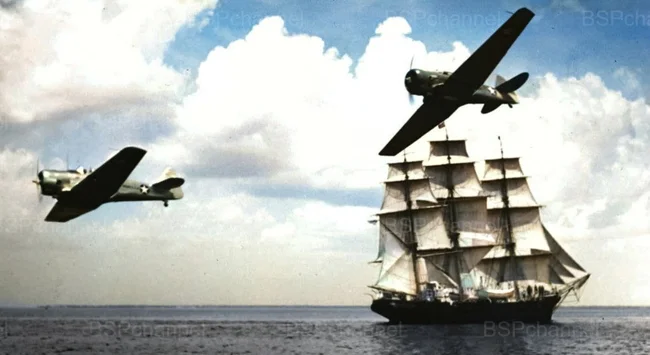
A German soldier sets fire to buildings in Warsaw during the deliberate destruction of the city. 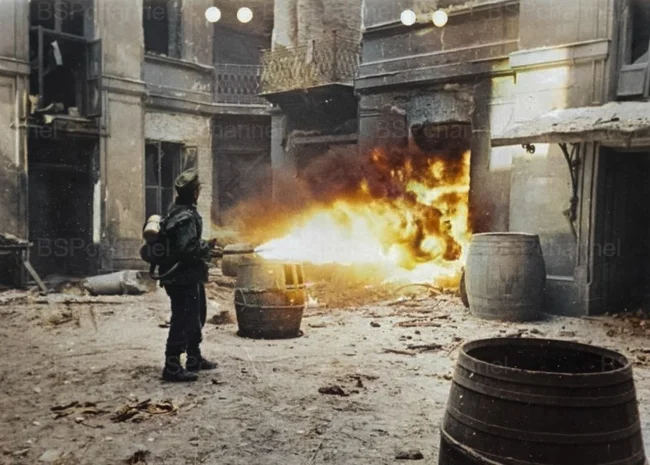
This photo shows one of the episodes of the methodical destruction of the Polish capital in the fall of 1944. The German occupier sets fire to Warsaw buildings, carrying out the criminal order of Heinrich Himmler. This was not a chaotic action, but a planned punitive operation that unfolded after the suppression of the Warsaw Uprising.
The US Navy destroyer USS Anoka after a storm, Aleutian Islands, 1943. 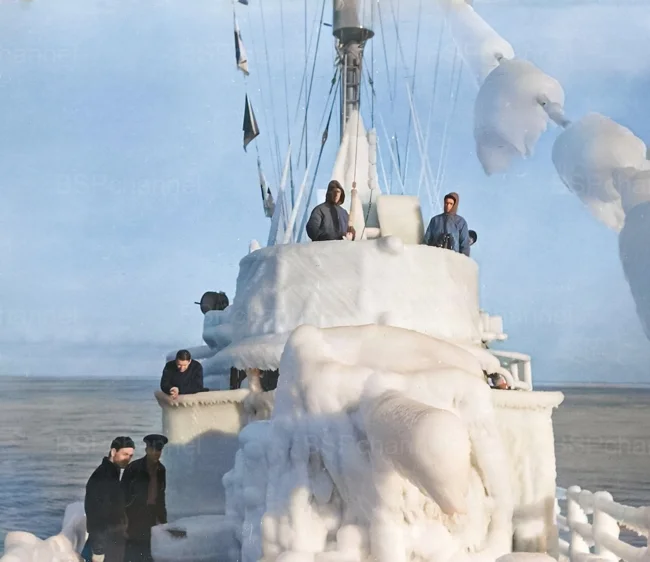
A bulldog guards a house during a London bombing raid, October 1940. 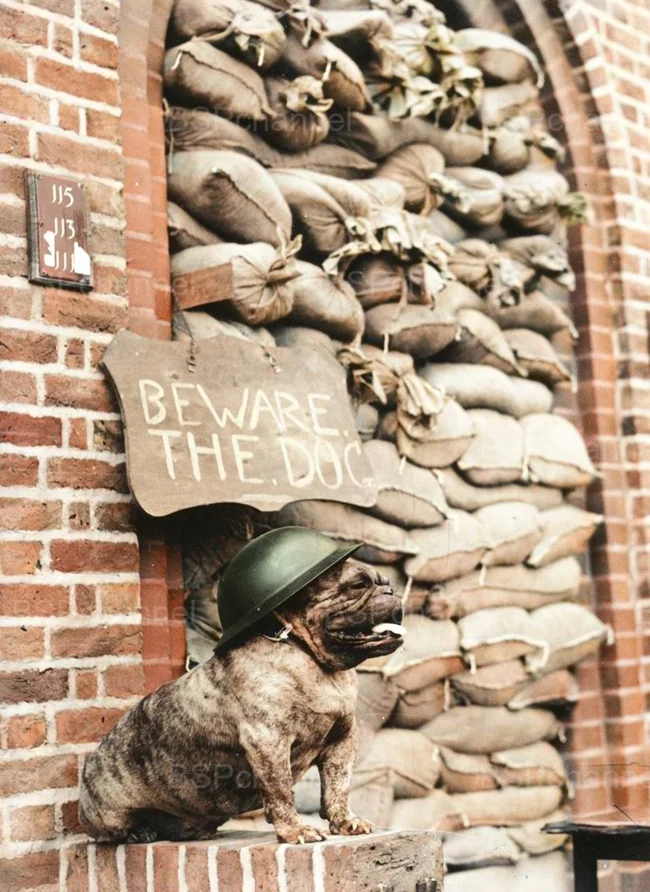
A London woman with her child during a gas mask test, 1941. 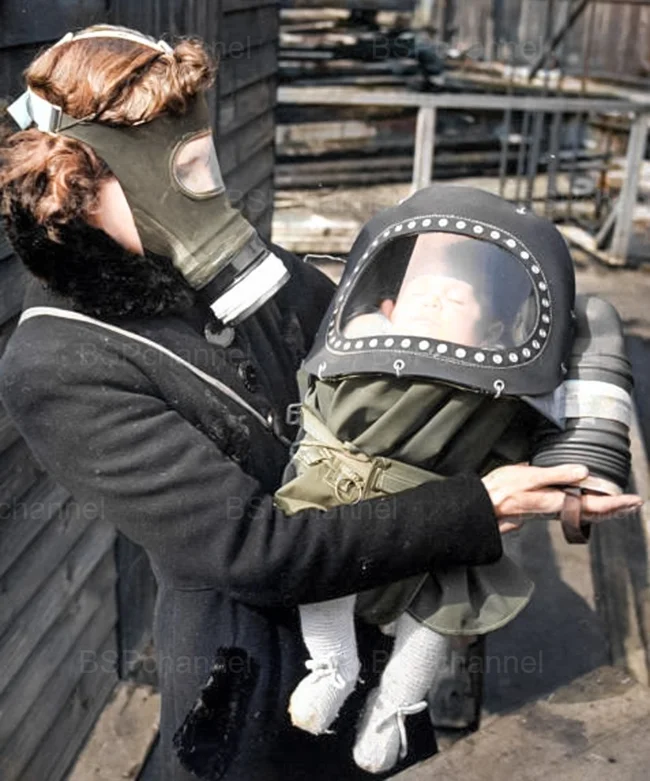
St. John's Hospital and Red Cross nurses from the mobile unit on the hospital grounds keep fit in their spare time by organizing football matches. World War II, Great Britain, November 1, 1939. 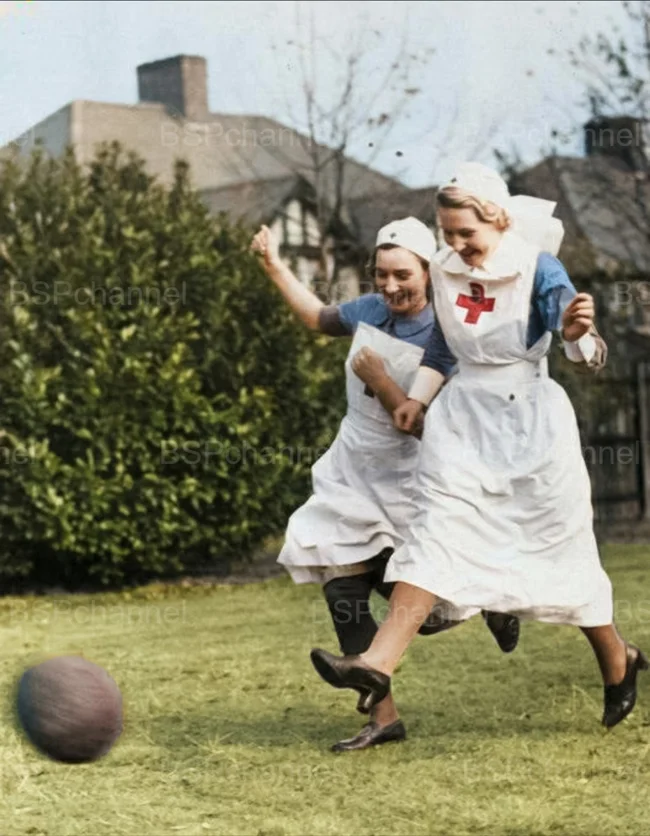
The Ovitz family of midgets. Jewish musicians from Romania who survived the experiments of Dr. Mengele in Auschwitz, 1940s. 
When prisoners arrived at a concentration camp, they had only one chance of surviving: if they were physically capable of hard labor. However, the fate of the Ovitz family was different. From the very moment of their arrival at Auschwitz, they attracted the attention of the camp staff, all because Mickey Ovitz, the head of the family, began handing out promotional postcards for his gypsy musical troupe right on the platform. This unusual prank quickly reached the attention of Dr. Josef Mengele, a doctor who became a symbol of the sadism and heartlessness of Nazi experiments on people. He was interested in genetic anomalies, and the Ovitz family, which included both short and average-sized people, seemed like an ideal subject for study. Mengele selected them separately from the rest of the prisoners and freed them from forced labor. Mengele's interest eventually grew into a real obsession. To the Ovitz family he added another, the Shlomovits, whose parents and six children claimed to be related (in fact, this was a lie, but the Ovitzes did not give them up). Together they were transferred to a special block that could be called a “human vivarium” – an observation and experimentation area under the direction of Mengele himself. For his “research,” the doctor created conditions that, by camp standards, seemed almost comfortable: the dwarfs had relatively good food, better sanitation, were allowed to keep their clothes on, and even not shave their heads. Taller family members were forced to carry the dwarfs to procedures, as if they were part of a strange scientific performance. But these “privileges” did not hide the true cruelty of what was happening. The Ovitzes were subjected to inhumane experiments. They had huge amounts of blood taken, teeth and hair pulled out, injected with unknown bacteria, burned with chemicals, dripped into their eyes causing temporary blindness, and had hot and cold water poured into their ears. Gynecologists carried out excruciating examinations of the women, injecting scalding liquids into their uteruses. Little Shimshon Ovitz, born prematurely and the only one in the family whose parents were both of normal height, was treated especially cruelly. Blood was taken from his fingers and the veins behind his ears over and over again. The Ovitzes witnessed the murder of two new dwarfs, whose bodies were then boiled so that their bones could be displayed in Mengele's "museum." Mengele once ordered the entire family to strip naked and be brought on stage in front of an audience, where he recounted his experiments. Another time, he even made a film of them, as entertainment for Adolf Hitler. The family sang German songs, joked and played musical instruments - all on the orders of Mengele, who called them by the names of the seven dwarfs from the famous Disney cartoon. According to Perla Ovitz, this is how he addressed them - as fairy tale characters, not living people. When Mengele was transferred to another camp, his experiments began to end. Prisoners began to be sent en masse to other camps or killed. The Ovitzes understood that their turn could come too. But on January 27, 1945, the Red Army units arrived, and Auschwitz was liberated. The Ovitzes were the only ones who managed to survive completely, without losses. After liberation, they spent some time in a Soviet refugee camp, but were soon released. The most offensive thing is that Mengele emigrated to Argentina after the war, where he died a natural death.
Fire on the American tanker "Mississinewa" after an attack by Japanese human torpedoes, 1944. 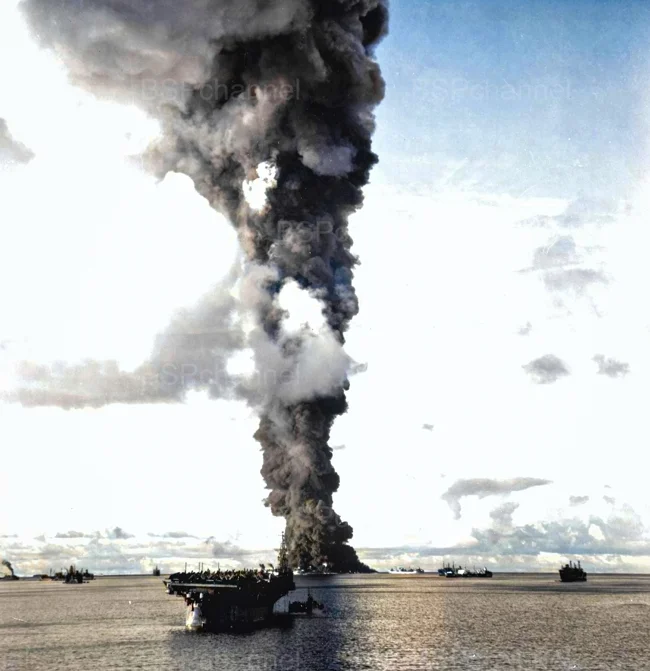
One torpedo that hit was fatal for the ship - it was more than enough. As a result, 64 crew members and one Japanese, who, according to some sources, was directly involved in aiming the torpedo, died. The ship, which was carrying aviation, diesel and other types of fuel, instantly burst into flames, turning into a giant pillar of fire about 30 meters high. 15-20 minutes after the hit, it completely sank under water. The sunken ship was found only in April 2001. According to eyewitnesses and researchers, about 24,000 gallons of fuel leaked from its hull over the course of two summer months that year. This created a serious threat to the local ecosystem, damaging coral reefs, habitats for many fish species, and places where sea turtles lay their eggs. The pollution also affected coastal lagoons, causing a regional ecological disaster.
A Wehrmacht mountain ranger at a pier in the Norwegian Finneidfjord, 1940. 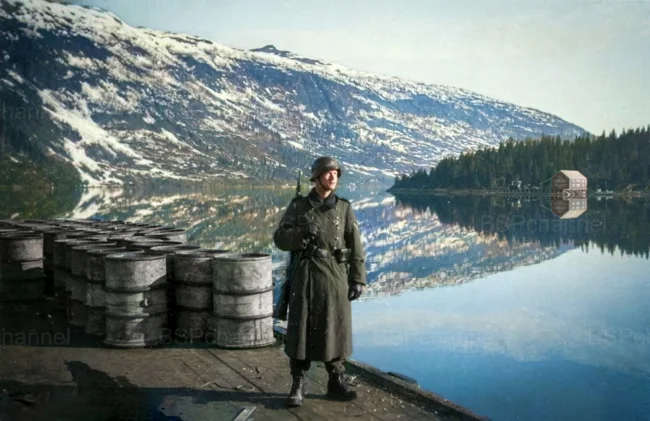
Photo: Karl Marth
French Corsican partisans inspect abandoned German equipment and weapons. Upper Corsica, France, 1943. 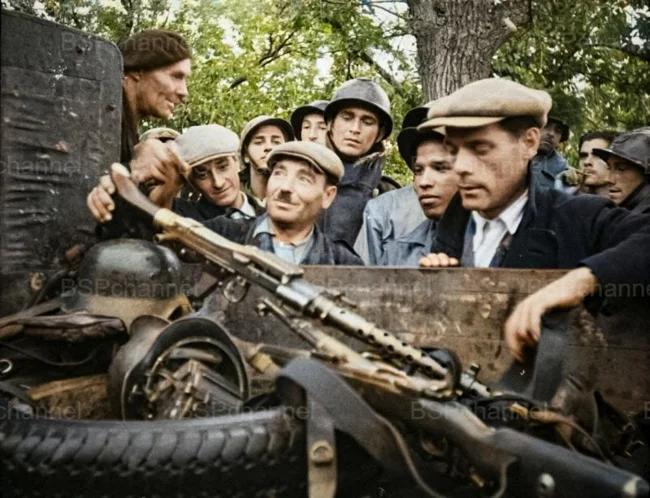
Newspapers announcing war with Germany. London, England, September 1939. 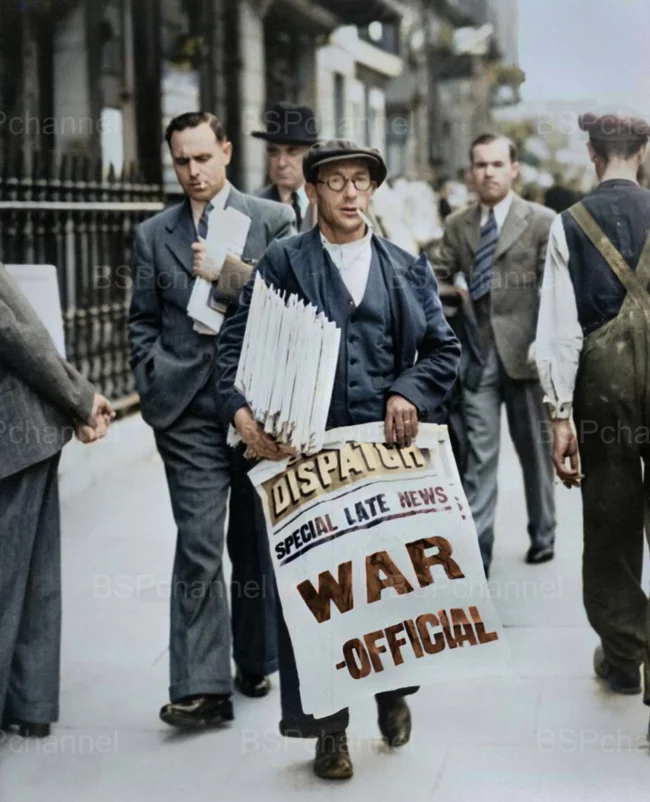
An American soldier talks to a young German woman in post-war Berlin, 1945. 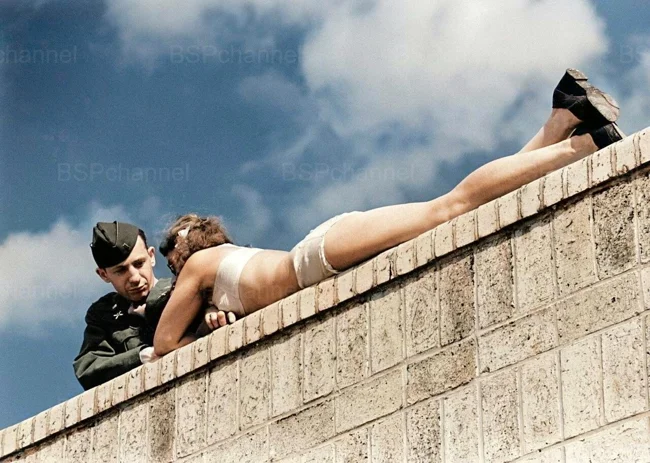
Photographer: Margaret Bourke-White
